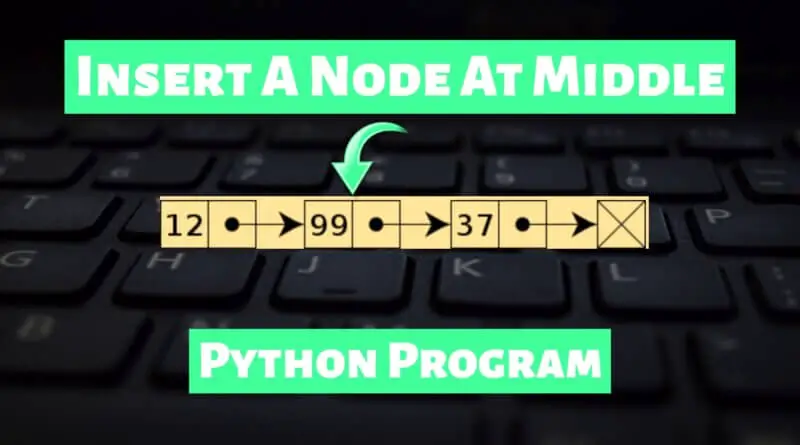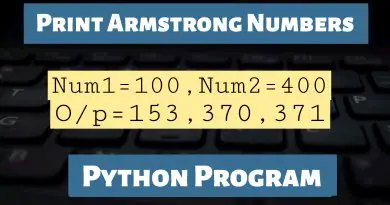Insert A Node At Middle In Linked List using Python
Technology and generation are growing up together, and the younger generation users are somewhat connected with tech and the internet all the time. Not to mention, today the whole world in this time of crisis is working over the internet. But to make these technologies, software, etc a software developer must have excellent problem-solving skills. In this world where the internet is the new fuel, one needs to be pretty sharp. And by sharp, for software developers, it means knowing how to automate real-world problems using computer programs. Data structures help a lot in this journey of logic building. So today we’re going to write a simple data structure program to Insert A Node At the Middle In Linked List using Python.
What is A Linked List?
A linked list is a basic list of nodes containing different elements for all algorithms in data structures. Also, it’s pretty easy to understand.
What’s The Approach?
- Before inserting a new node we’ll first check whether the previous node is null or not. If the previous node is null then we’ll not add the new node.
- If the previous node is not null then we’ll simply create a new node and insert data into it.
- Now we’ll store the address which is stored in the previous node into this new node.
- At last, in the previous node’s address section we will store the address of this new node.
Also Read: Print Smallest Of Three Without Using Comparison Operator in Python
Python Program To Insert A Node At Middle In Linked List
Input:
append(6)
push(7)
insertAfter(8)
Output:
Created Linked List is: 7 8 6
# Python program to demonstrate
# insertion method of linked list in the Middle
# Node class
class Node:
# Function to initialise the node object
def __init__(self, data):
self.data = data # Assign data
self.next = None # Initialize next as null
# Linked List class contains a Node object
class LinkedList:
# Function to initialize head
def __init__(self):
self.head = None
# Functio to insert a new node at the beginning
def push(self, new_data):
# 1 & 2: Allocate the Node &
# Put in the data
new_node = Node(new_data)
# 3. Make next of new Node as head
new_node.next = self.head
# 4. Move the head to point to new Node
self.head = new_node
# This function is in LinkedList class. Inserts a
# new node after the given prev_node. */
def insertAfter(self, prev_node, new_data):
# 1. check if the given prev_node exists
if prev_node is None:
print "The given previous node must inLinkedList."
return
# 2. create new node &
# Put in the data
new_node = Node(new_data)
# 4. Make next of new Node as next of prev_node
new_node.next = prev_node.next
# 5. make next of prev_node as new_node
prev_node.next = new_node
# This function is defined in Linked List class
# Appends a new node at the end. This method is
# defined inside LinkedList class shown above */
def append(self, new_data):
# 1. Create a new node
# 2. Put in the data
# 3. Set next as None
new_node = Node(new_data)
# 4. If the Linked List is empty, then make the
# new node as head
if self.head is None:
self.head = new_node
return
# 5. Else traverse till the last node
last = self.head
while (last.next):
last = last.next
# 6. Change the next of last node
last.next = new_node
# Utility function to print the linked list
def printList(self):
temp = self.head
while (temp):
print temp.data,
temp = temp.next
# Code execution starts here
if __name__=='__main__':
# Start with the empty list
llist = LinkedList()
# Insert 6. So linked list becomes 6->None
llist.append(6)
# Insert 7 at the beginning. So linked list becomes 7->6->None
llist.push(7);
# Insert 8, after 7. So linked list becomes 7-> 8-> 6-> None
llist.insertAfter(llist.head, 8)
print 'Created linked list is:',
llist.printList()



